Starting small but motivated: Couple from Camarines Sur establishes free range chicken farm with just 10,000 pesos
By BENJAMIN SARONDO
Starting with 10,000 pesos as capital, Francis Christian Fornoles and Vinnie Bañaria, both 22 years old, manage their own free range chicken farm in San Francisco, Bula, Camarines Sur, named VF’s Humble Farm.
“We started small, with buying the seven chicks and growing them to become breeders, as well as the housing and feed expenses,” Fornoles stated. “At first, we had seven pieces of Italian Line Black Australorp chicks; we grew them, and after eight months, we produced our own chicks on the farm.”
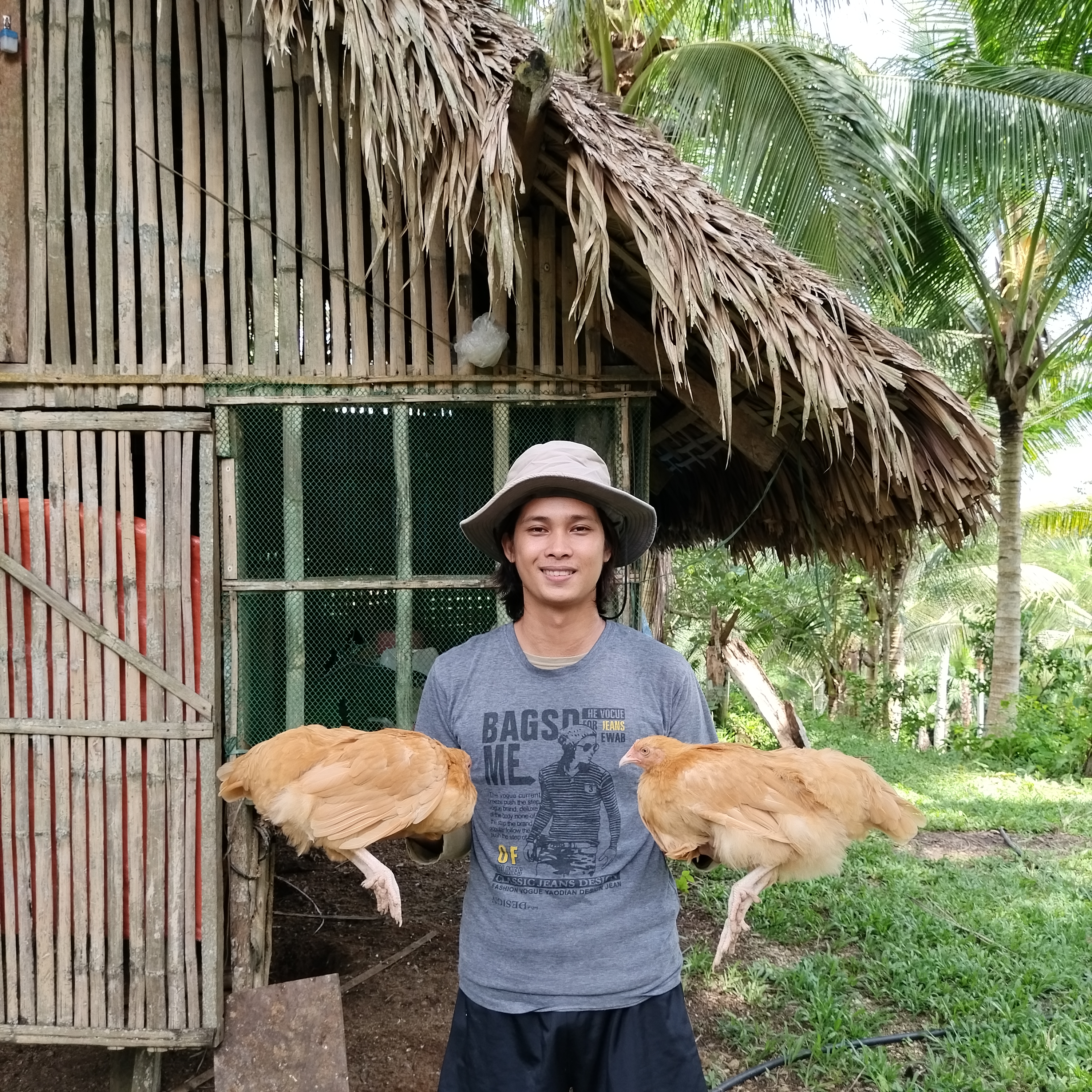
They started free range chicken farming during the pandemic. Currently, they are raising Rhode Island Red, Black Australorps, and Barred Plymouth Rock chickens on their ¾ hectare farm.
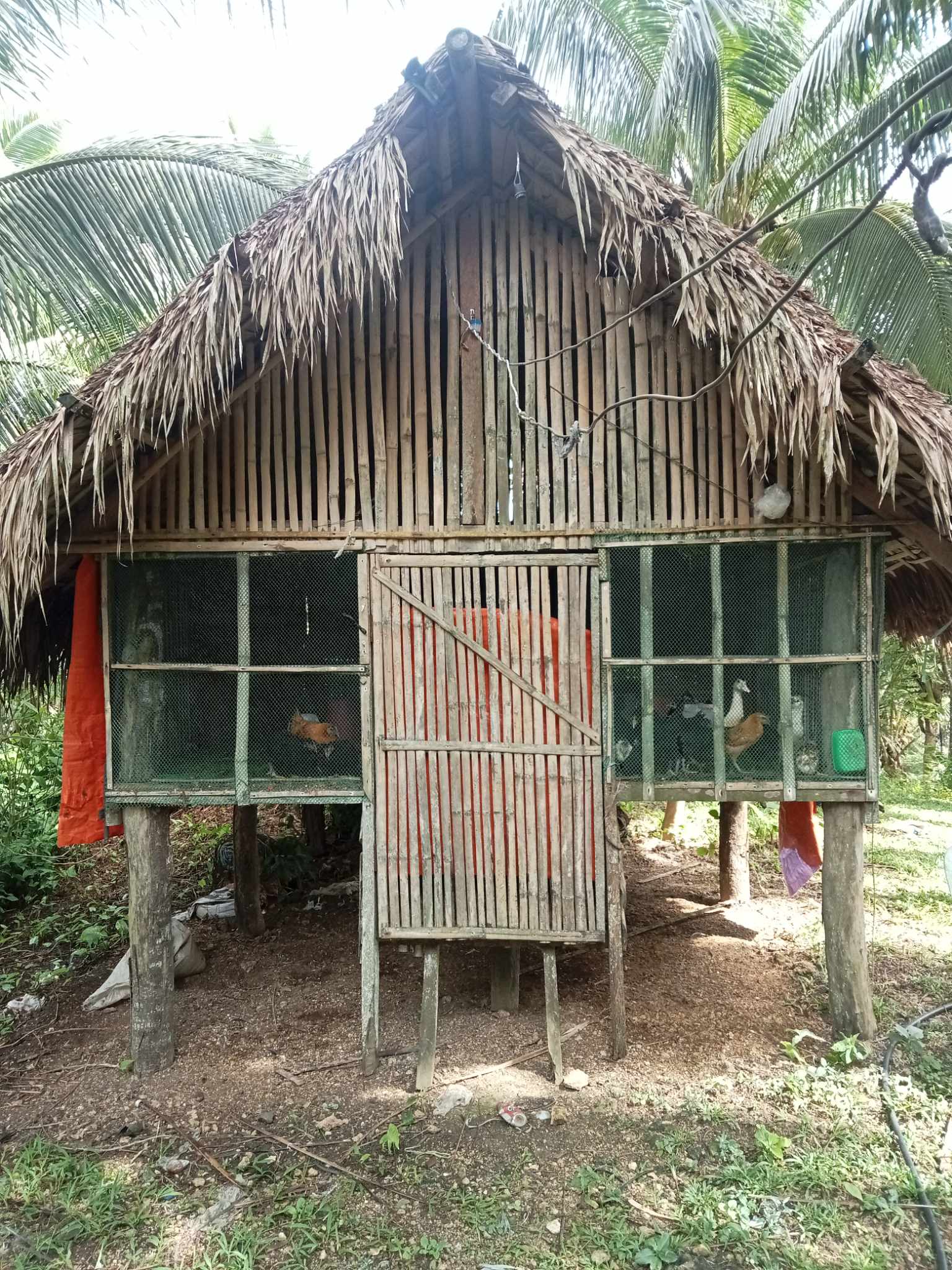
READ: Five tips to start your free range chicken farm with a limited budget
Aside from housing different breeds of free range chickens, they also grow plants on their farm. “As a chicken raiser, we grow plants that are nutritious for our chickens. We have madre de agua and azolla as protein sources, and mulberry fruits as a treat,” Fornoles said.
Started from scratch
The only reason Fornoles and Bañaria pursued free range chicken farming is because they like chickens, even as kids, particularly game fowl. “In college, I found out about free range chicken farming and the beautiful breeds of chicken. I researched it and saw the potential of it as a business,” Fornoles stated.
Both of them claimed that they have no background in agriculture and only relied on the available videos online about free range chicken farming. “We watched the free seminars of Dr. Erwin Cruz and Dr. Ma. Asuncion Beltran on YouTube and other chicken vloggers,” Fornoles said.
They put what they learned into practice. “We raised the chicks for an experiment and applied the guides that I read on the internet,” Fornoles stated. “Since we started during the pandemic, we had plenty of time to stay on the farm and observe the chickens.”
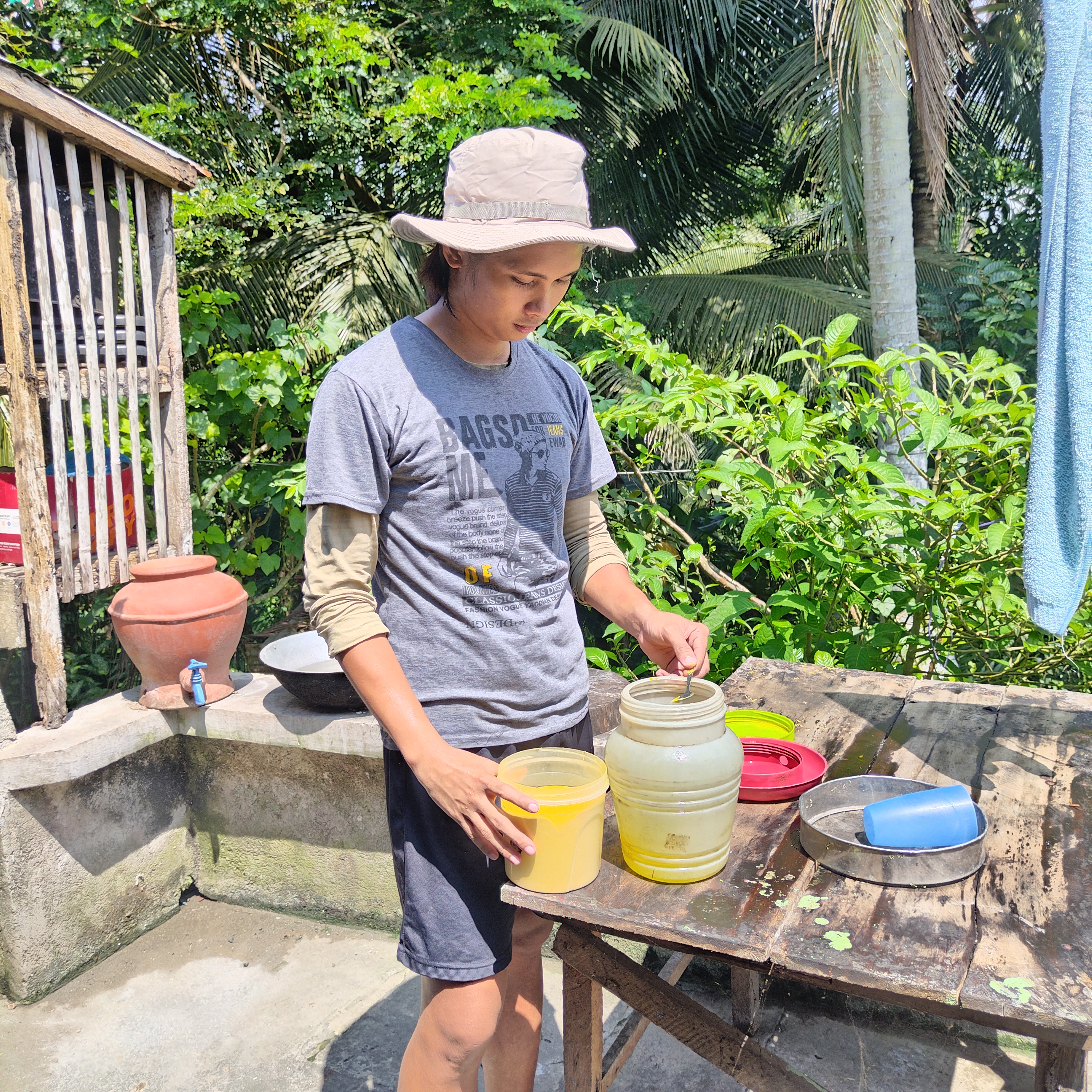
Step-by-step process and improvements
Before starting their free range chicken farm, they both studied different breeds, the market for each breed, and guides for raising free range chickens. They then decided to raise Italian Line Black Australorp chicks. Then, they built a small brooder, a heated house for chicks, and bought a few chicks to apply what they had learned from researching.
“When the chickens were about to produce eggs, we built breeding pens, big brooders, growing pens, and ranging areas,” Fornoles stated. “Our aim during that time is to sell organic table eggs. We did not expect that we would also be able to sell chicks, fertile eggs, and ready to breed chickens,” he added.
Now that they have products that can be offered to the market, the next step they took was to identify how to market their products effectively. “We created our farm's logo, taglines, and Facebook page to finally introduce our farm into the online community. We made sure that our page not only provided marketing but different trivia to also guide our customers and followers as well,” Fornoles said.
Accomplishing daily tasks
The very purpose of free range chicken farming is to let the chickens forage for themselves, allowing the owners to spend less time handling the tasks than with caged chickens. But before allowing the chickens to forage for themselves, the couple slowly trained them to be independent on a free range farm.
“From two to three months old, we give mixed starter crumble, corn grits and maintenance feeds twice a day. They can also go to a ranging area for at least four hours when the weather is good, which is good training for hardening,” Fornoles said.
“At three months until six months old, we do give maintenance feeds, corn grits, and forages such as azolla, madre de agua and mulberry leaves. When they are four months old, our chickens can eat grasses at our ranging area and we feed them with maintenance feed products twice a day,” Fornoles added.
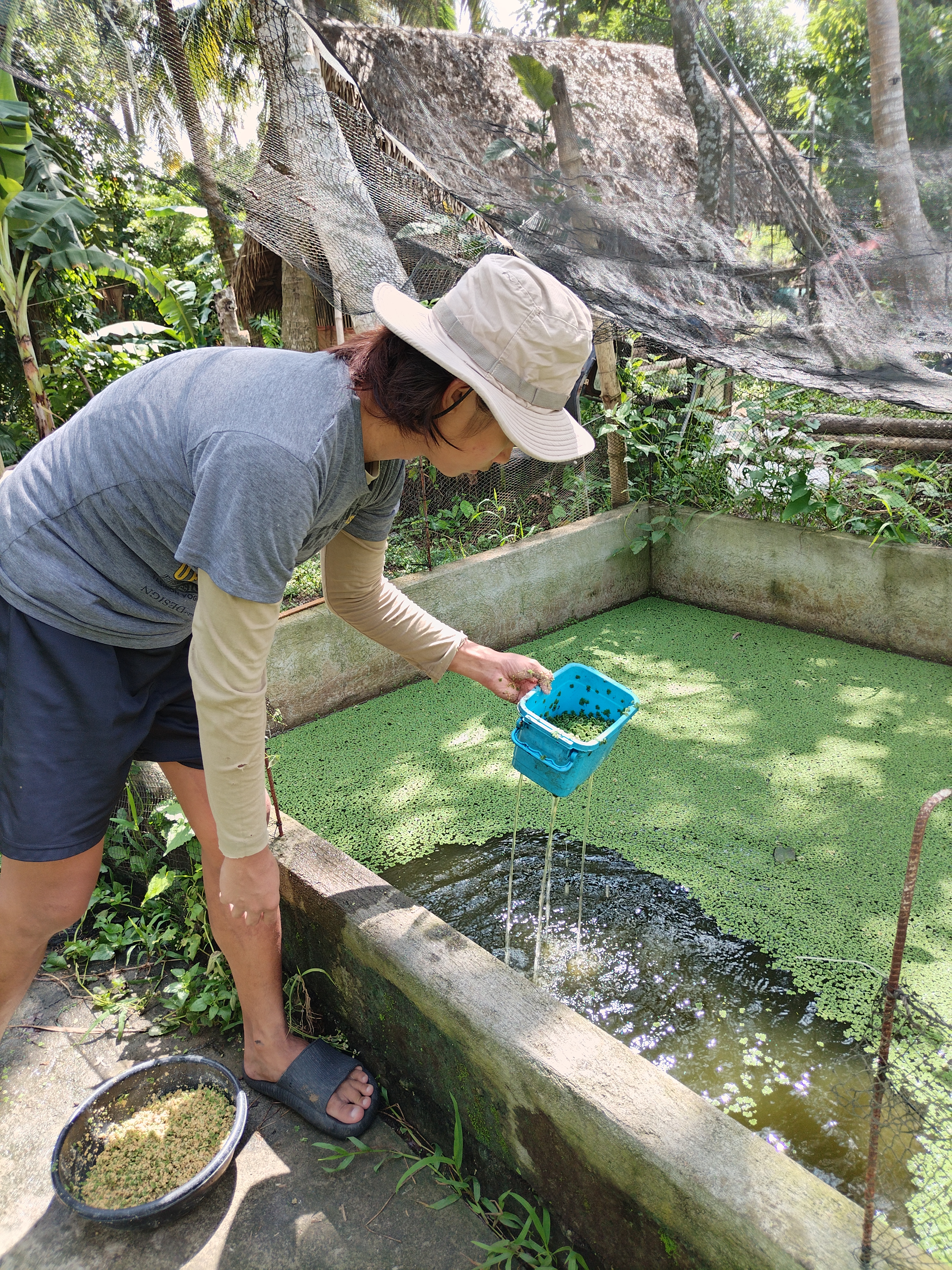
Fornoles also said that they still accomplish daily chores to ensure that the chickens will grow healthy, considering that free range chicken farming is more vulnerable to different diseases and viruses compared to caged chickens.
“Our daily chores are cleaning the feeding trays, drinkers, and their houses. We prepare the feeds by mixing commercial feeds with chopped leaves of madre de agua and mulberry and then feed them to the chickens. Lastly, we boil oregano leaves as herbal and organic vitamins for the chicken, which is mixed in their water for the whole day,” Fornoles said.
Monthly, they deworm and bathe their chickens to keep them clean and away from viruses. And they also vaccinate the chickens to prevent disease outbreaks on the farm.
Managing struggles
Like most free range chicken farms, VF’s Humble Farm also struggles with natural occurrences such as typhoons or days with heavy rain. “What we do is, when there’s a typhoon coming, we evacuate our chickens immediately, put all of them in one sturdy housing, and cover it with ‘trapal’ and plastic covers. We make sure that the chickens, especially the chicks, stay dry and warm,” Fornoles said.
And since the chickens are in an open and free environment, they are prone to diseases and viruses. “We keep the housing clean, medicate them regularly, and vaccinate them to prevent diseases inside the farm. We also isolate chickens that show signs of sickness.”
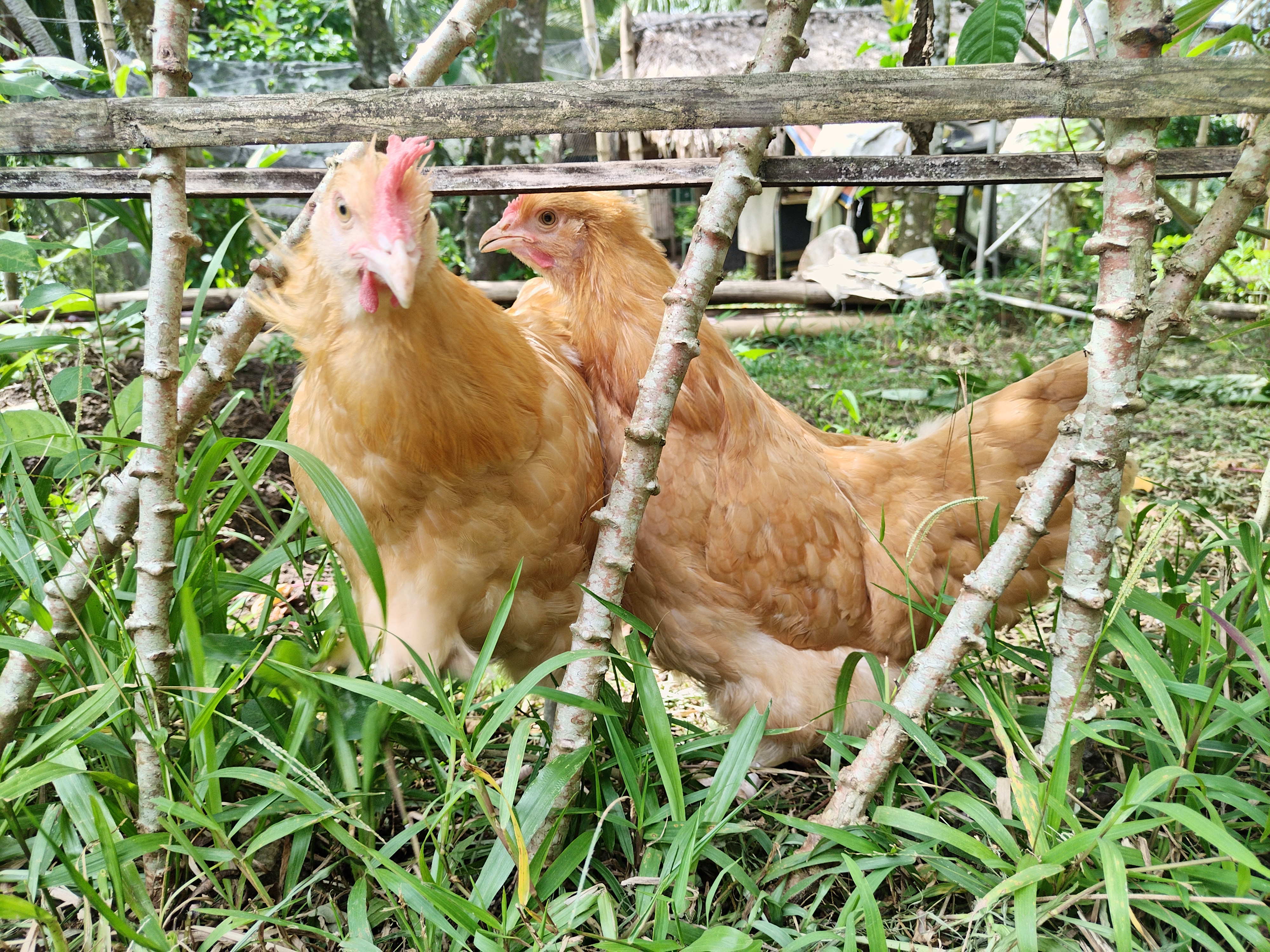
“The unstable price range in the market is one of our main problems in the business.“ What they do is always observe the market and adjust without compromising the quality of our service.
Status: Expanding
“As we started to develop partnerships, we were slowly relocating and expanding our farm,” Fornoles said. Bañaria is a fresh graduate, and while still applying for a job, she spends her time thinking of plans for new housing and a more effective setup for the chickens.
Currently, VF’s Humble Farm only has four English Buff Orpington chickens on the farm. Fornoles said that he sold the Italian Black Australorps and used the money during the free range farm relocation from his house backyard to a ¾ hectare family-owned land property that is only meters away from his house in Barangay San Francisco, Bulu, Camarines Sur.
“It is not a major relocation, but we wanted to relocate our free range farm to a more spacious area because we foresee our business getting bigger and we noticed that some of our chicken coops should be renovated and redesigned,” Forboles said.
Some of our chicken was under the care of our trusted partner farms, and we are planning to buy new breeders when we finish building new breeding pens,” Fornoles said.
She also shared that chicken farming helped her become more disciplined by making her committed to her work and fulfilling her responsibilities no matter what. “For me, chicken farming is not just about feeding chickens; it is about being responsible as their owner and giving them the best treatment and living environment.”
She is also motivated to provide healthy food to the market. “I know that people want to eat healthy foods, but most of these healthy foods are expensive and sometimes out of our budget already. I think that this kind of business allows us to serve people the healthy food that they need in a budget friendly price range.”
Photos by VF’s Humble Farm